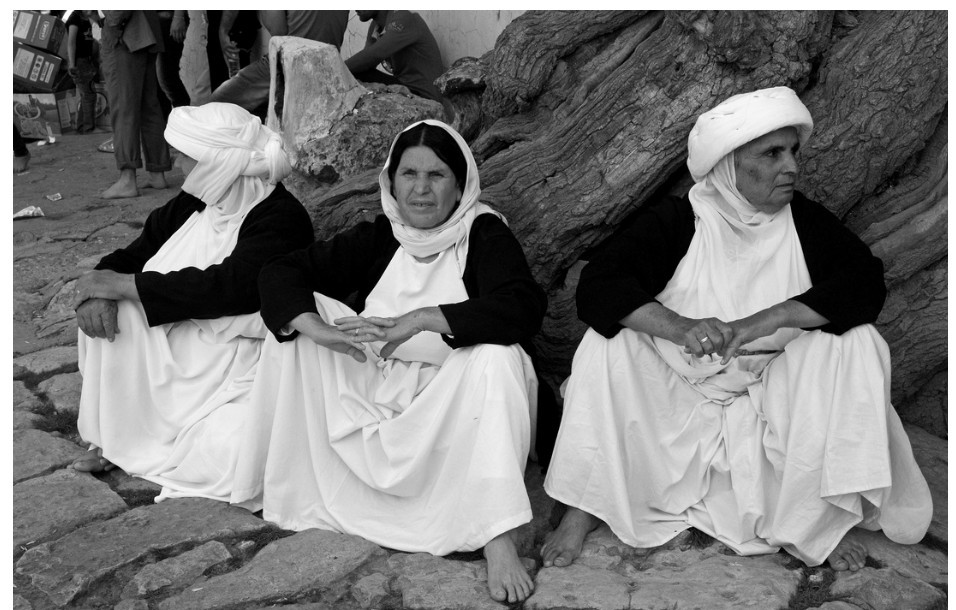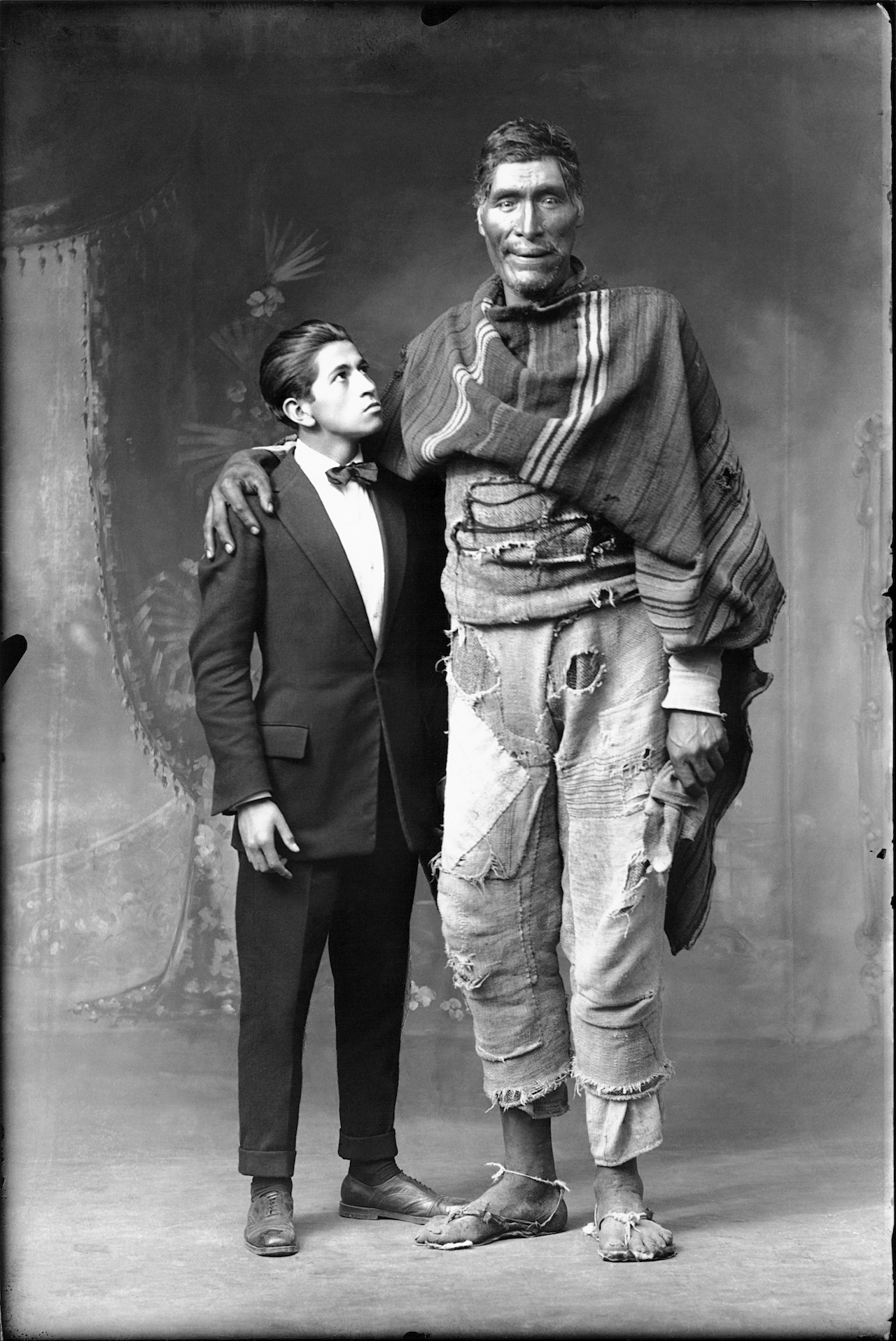
Martín Chambi, “Two Giants from Cusco” (1925) (all images courtesy of Instituto Moreira Salles)
In 1905, when the Andean photographer Martín Chambi was 14 years old, he traveled to northwestern Peru with his father, who had a job working in a gold mine there. At the time, there were no indigenous photographers in the country, and images of the Quechua people were mostly captured through the lenses of French and American photographers. But after meeting the photographer for his father’s mining company, Chambi became enamored with the camera. He soon apprenticed himself to Max T. Vargas — one of the earliest Peruvian photographers — and a legend was born.
“I’ve read that in Chile they think that the indigenous South American peoples have no culture, that they are not civilized, that they are intellectually and artistically inferior to European white peoples,” he wrote in 1936, long after he’d become a celebrated Peruvian photographer. “[My] artworks are a graphic testament that is more eloquent than my own opinion … I feel I am representing my race; my people will speak through the photographs.”
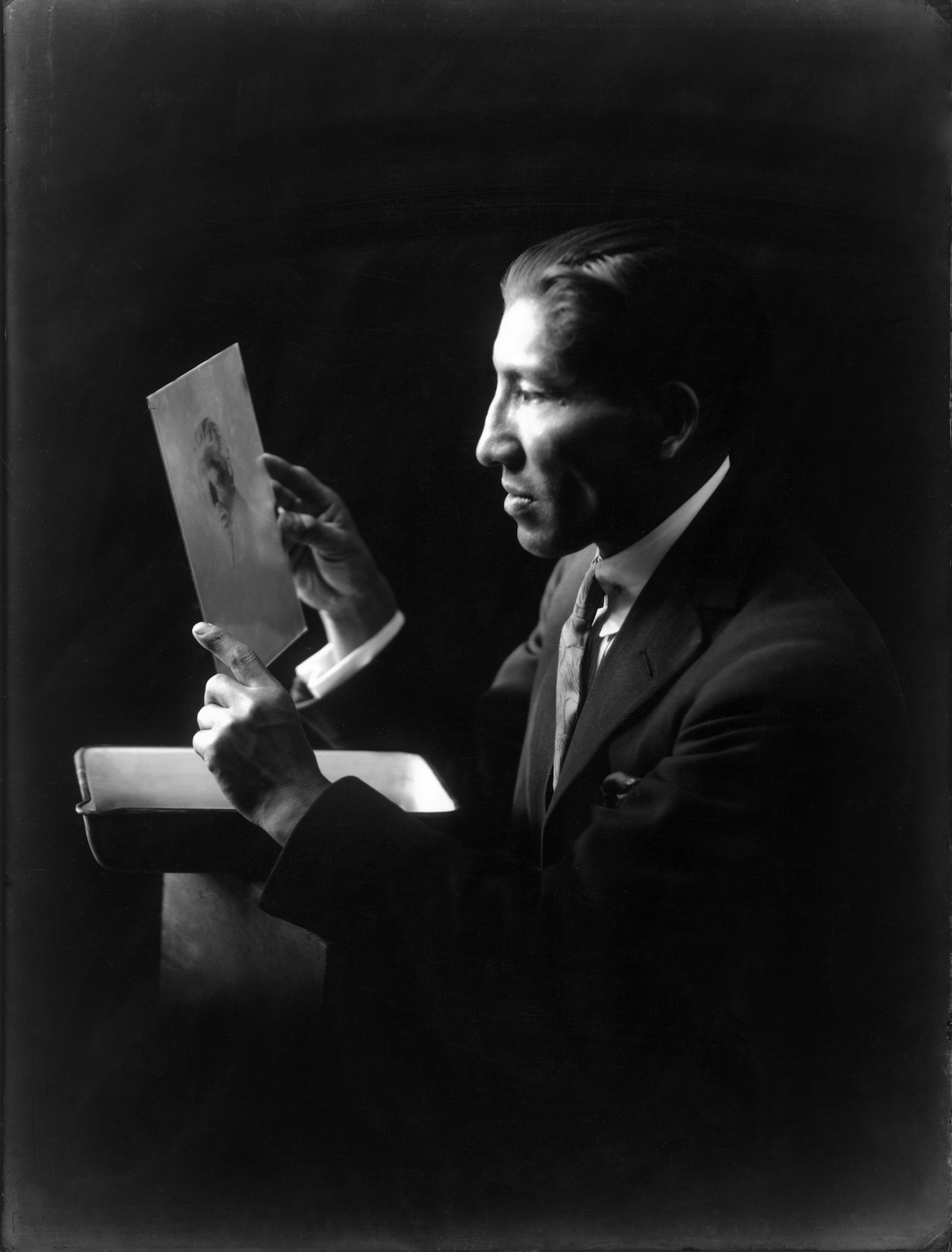
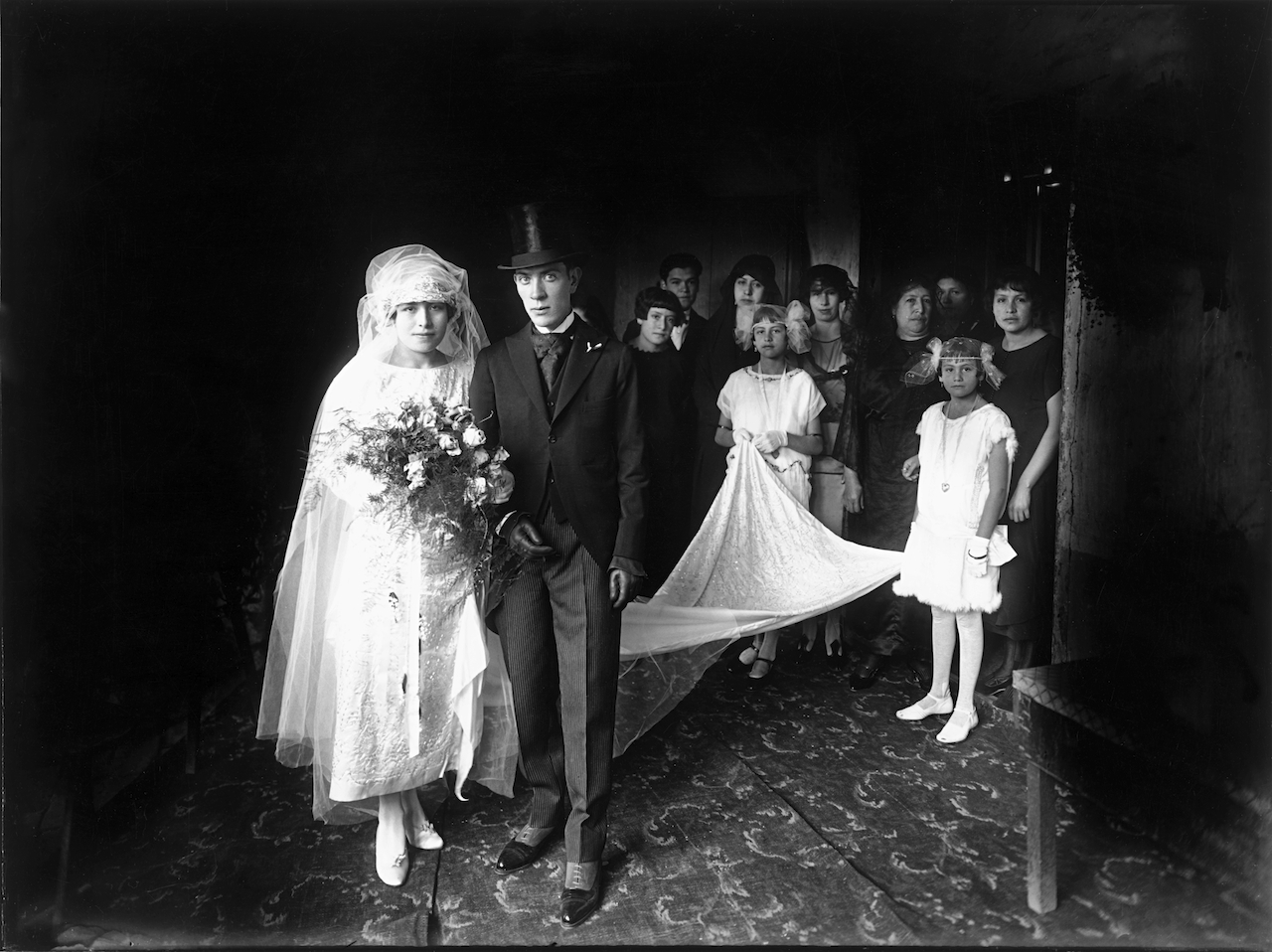

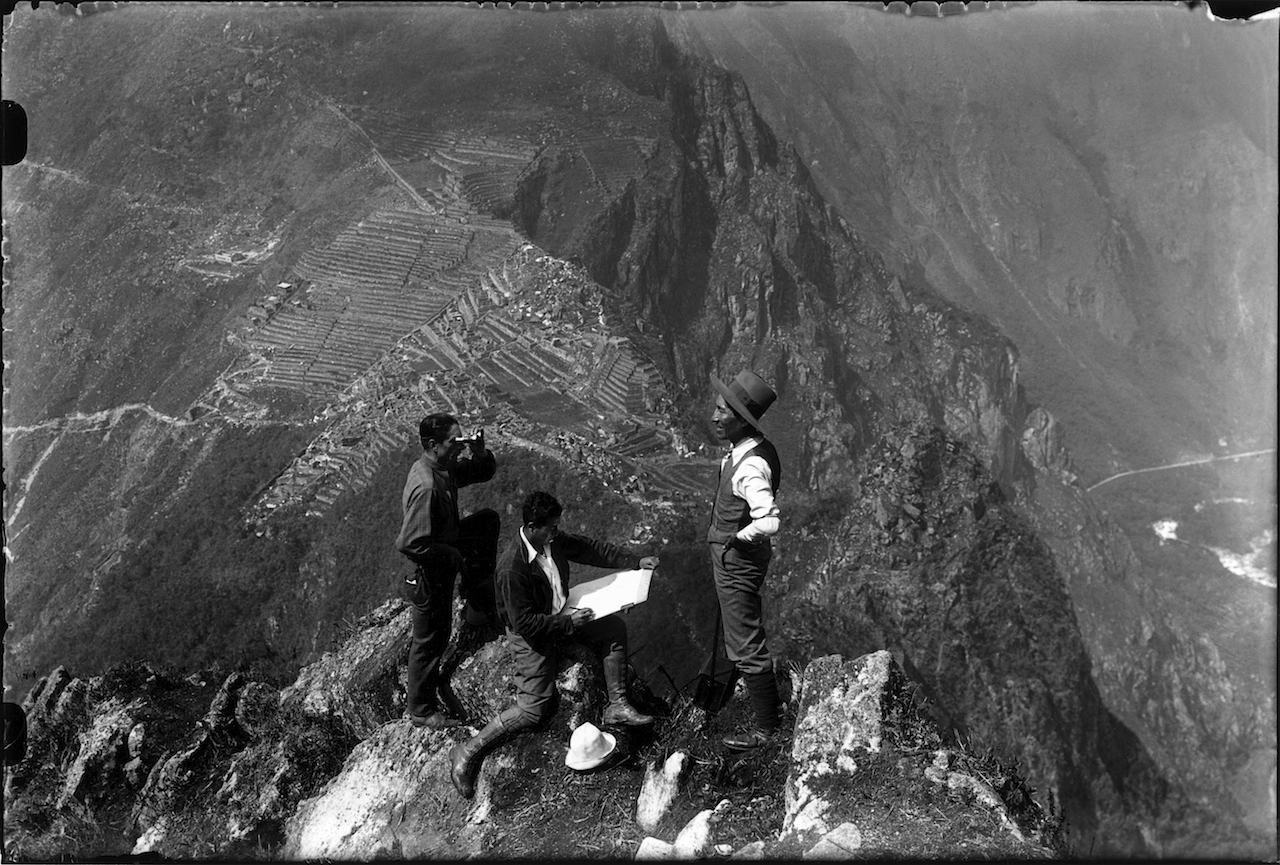

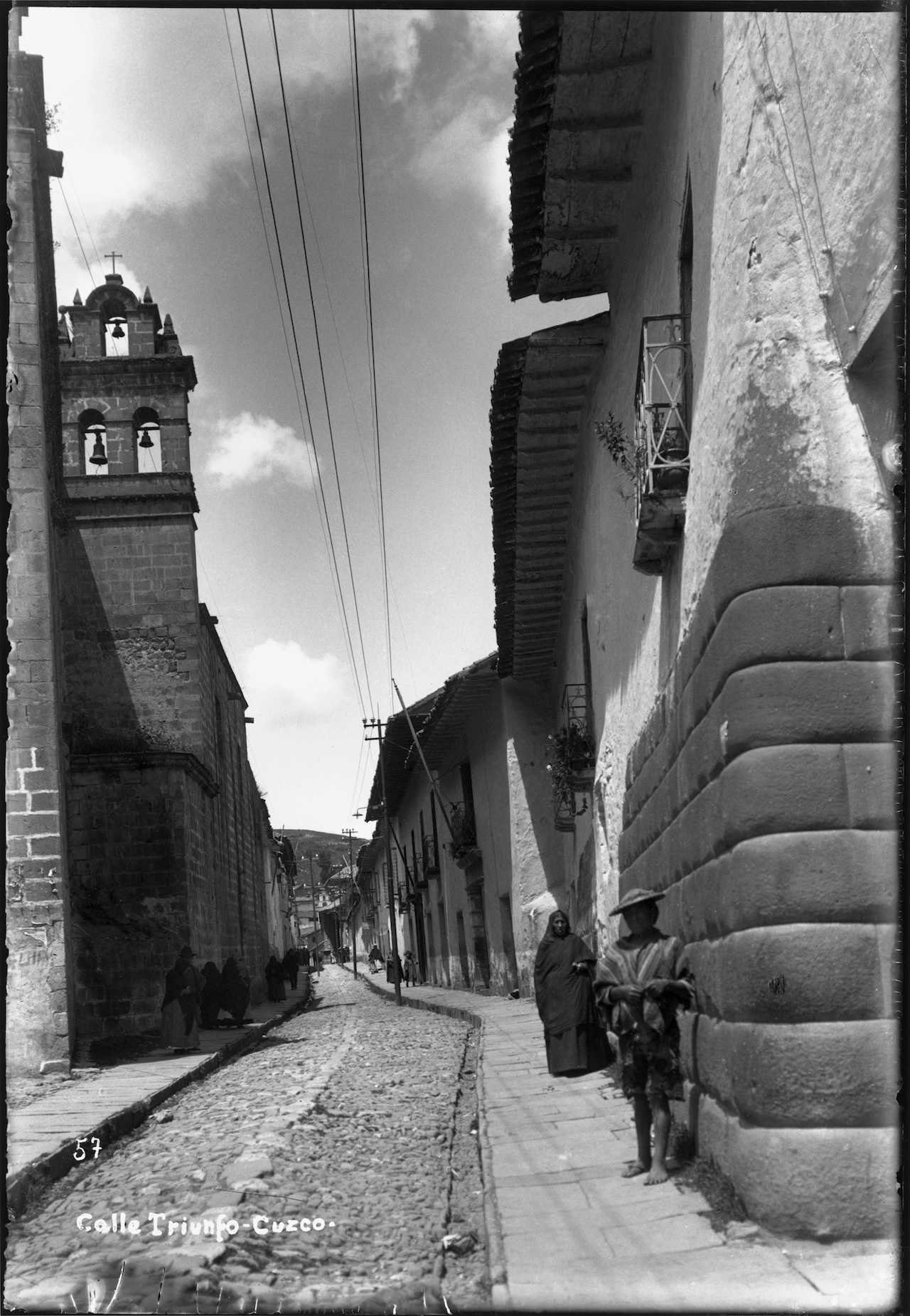
Face Andina – Fotografias de Martín Chambi continues at the Instituto Moreira Salles (Rua Piauí, 844, São Paulo, Brazil) through February 22, 2015.
